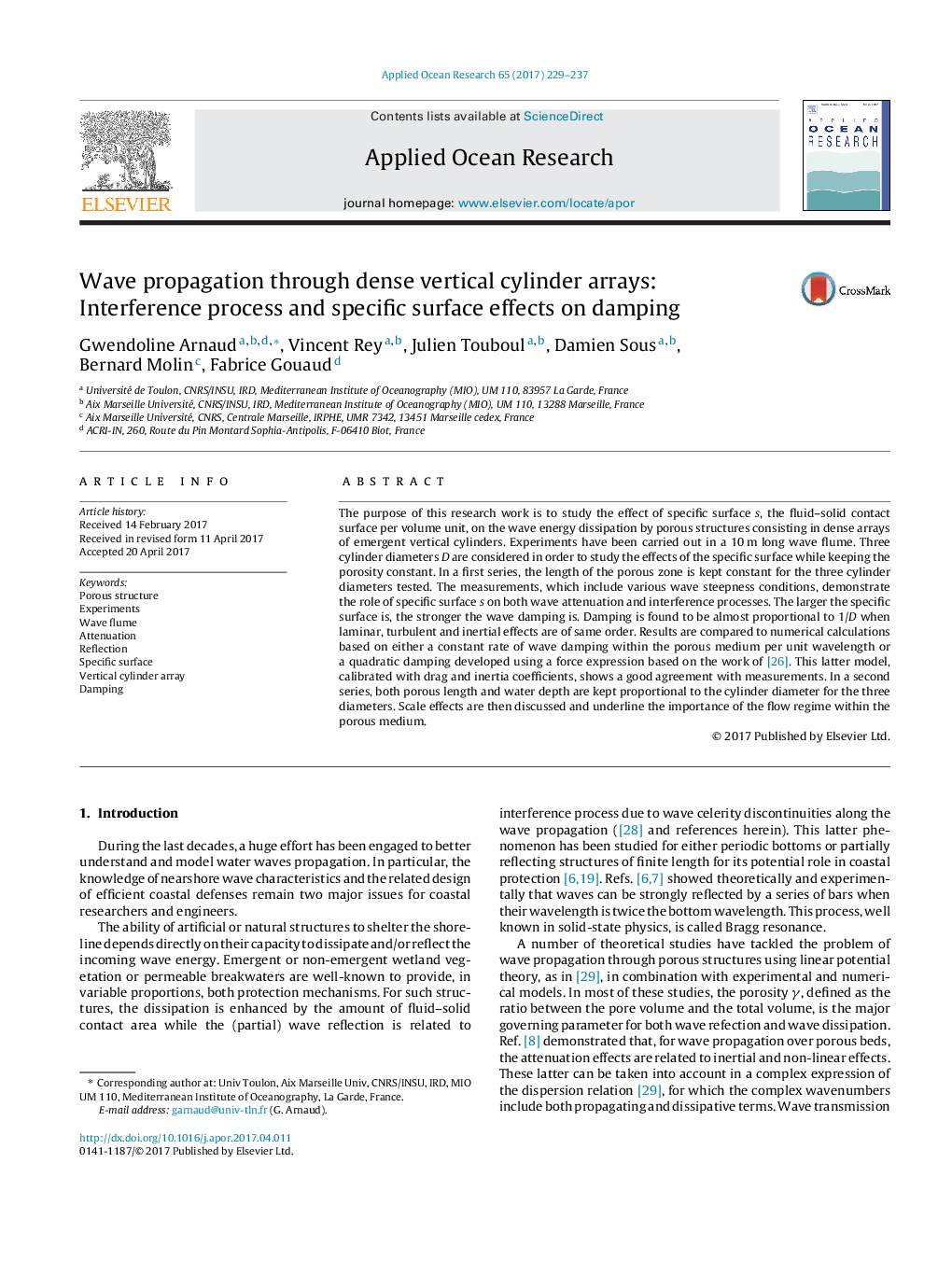| Article ID | Journal | Published Year | Pages | File Type |
|---|---|---|---|---|
| 5473313 | Applied Ocean Research | 2017 | 9 Pages |
Abstract
The purpose of this research work is to study the effect of specific surface s, the fluid-solid contact surface per volume unit, on the wave energy dissipation by porous structures consisting in dense arrays of emergent vertical cylinders. Experiments have been carried out in a 10Â m long wave flume. Three cylinder diameters D are considered in order to study the effects of the specific surface while keeping the porosity constant. In a first series, the length of the porous zone is kept constant for the three cylinder diameters tested. The measurements, which include various wave steepness conditions, demonstrate the role of specific surface s on both wave attenuation and interference processes. The larger the specific surface is, the stronger the wave damping is. Damping is found to be almost proportional to 1/D when laminar, turbulent and inertial effects are of same order. Results are compared to numerical calculations based on either a constant rate of wave damping within the porous medium per unit wavelength or a quadratic damping developed using a force expression based on the work of [26]. This latter model, calibrated with drag and inertia coefficients, shows a good agreement with measurements. In a second series, both porous length and water depth are kept proportional to the cylinder diameter for the three diameters. Scale effects are then discussed and underline the importance of the flow regime within the porous medium.
Related Topics
Physical Sciences and Engineering
Engineering
Ocean Engineering
Authors
Gwendoline Arnaud, Vincent Rey, Julien Touboul, Damien Sous, Bernard Molin, Fabrice Gouaud,
